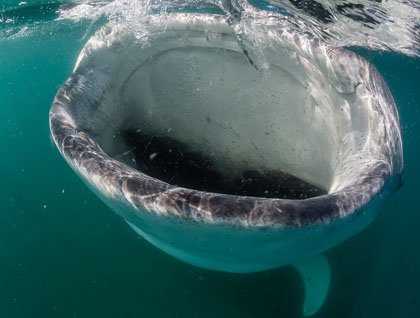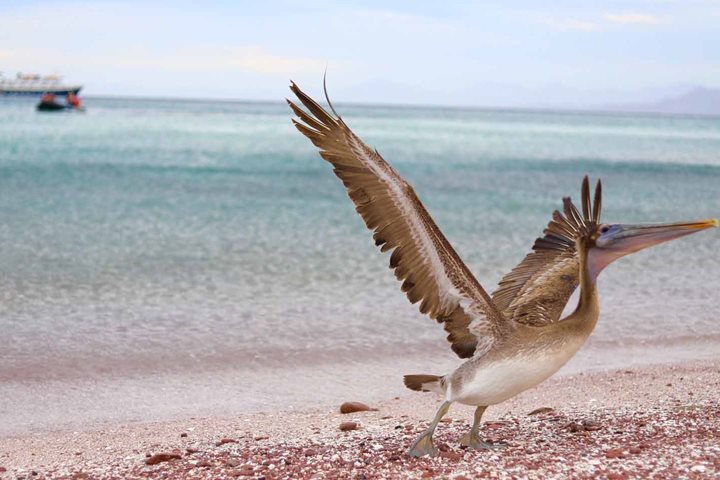Even before sunrise this morning the excitement was palpable on the National Geographic Sea Bird as we loaded local boats for an excursion to see and swim with whale sharks along the coastline at El Mogote, just a few minutes ride from where the ship was docked in downtown La Paz, Baja California Sur. Sharp eyes quickly detected the first sharks of the day, and in military precision we splashed in and snorkeled amongst these majestic creatures.
The whale shark is not only the world’s largest living shark species, but also the largest fish of any kind in the ocean. It is one of only three species of shark that filter their food from the water, rather than killing or scavenging it. Strong northwesterly winds drive plankton deep into the Bay of La Paz, and the sharks gather in large numbers here to enjoy the feast!
Often whale sharks can be seen very close to the ocean’s surface, ramming plankton rich water into their filter pads as they swim. Today we had the pleasure of witnessing several individuals actually swimming head up and vertically in the sea, sucking huge gulps of food and water into their wide-open mouths, all the while slowly rotating in a circle right in front of us! Incredible!
A very special treat was on offer this afternoon as we had the opportunity to visit Rancho Cacachiles, a little over an hour’s drive from La Paz in the Sierra Cacachiles. This scientific base of operations is comprised of several individual ranches that are bound together to offer a field camp for research and academic activities to study the flora and fauna of Baja California Sur.
Dr. Jon Rebman spoke to us about the amazing biodiversity of plants to be found here in the Baja Peninsula. With over 4,500 species to be found in this region and an endemism rate of about 27% for all plants and 70% for cactus species, this area is a perfect laboratory to study natural selection and evolution. Dr. Rebman followed his talk with a guided walk through the desert speaking about the plants that carve out a living in this harsh environment.
Dr. Winifred Frick followed with a fascinating presentation about some of the 26 species of bat to be found in Baja. One of the highlights of her research was the discovery that the insectivorous pallid bat (Antrozous pallidus) was a regular nighttime visitor and pollinator of the cardon cactus. She is currently studying the seasonal and population ecology of the lesser long-nosed bat (Leptonycteris yerbabuenae), which was recently delisted from endangered status here in Mexico.
Finally Ph.D. candidate Edward Hurme discussed his study of the fish-eating bat species Myotis vivesi on tiny Isla Partida in the northern Gulf of California. Putting tiny GPS and audio trackers on these bats has revealed much about this species feeding and movement behavior. Our two “bat talks” were followed by close up inspections and subsequent release of several California leaf-nosed bats (Macrotus californicus) back to the gold and silver mine nearby that they currently call home.
From the largest shark on the planet, to the only flying mammals on Earth, our day was filled with the excitement of discovery!







